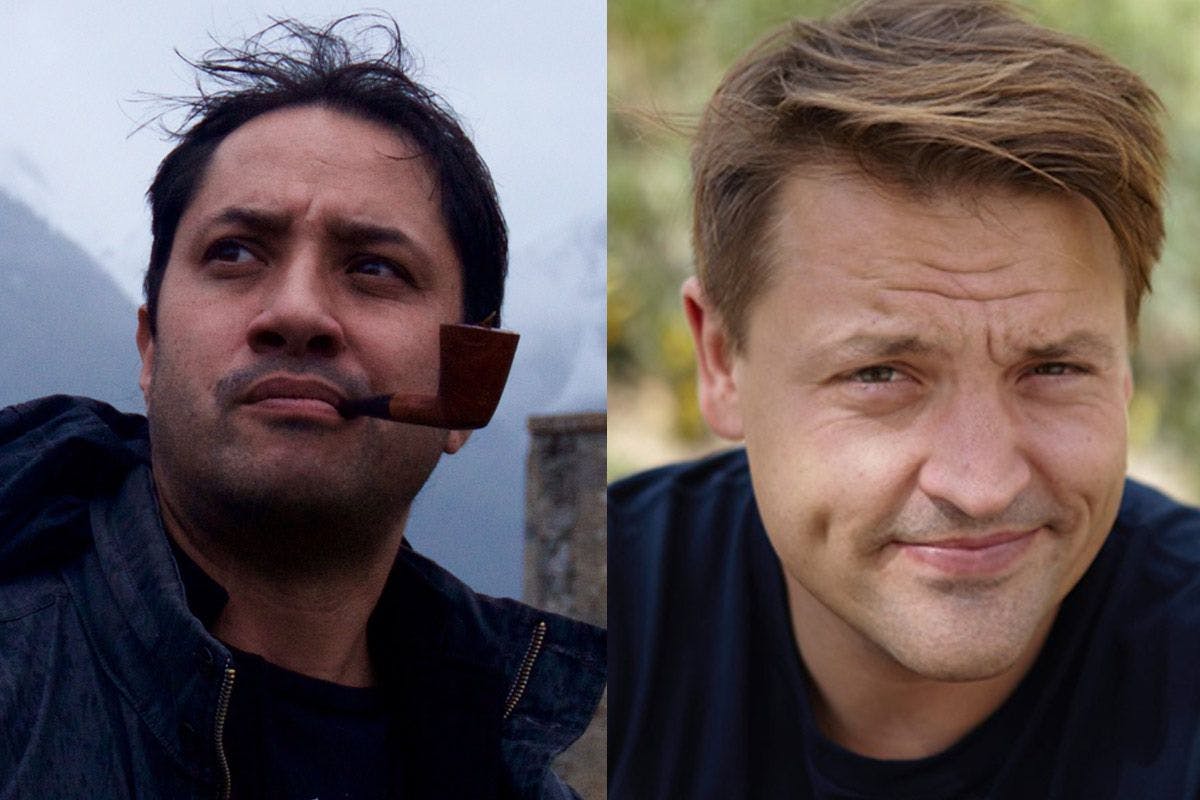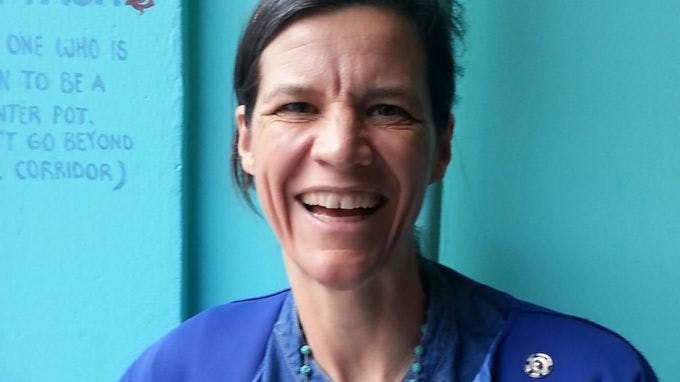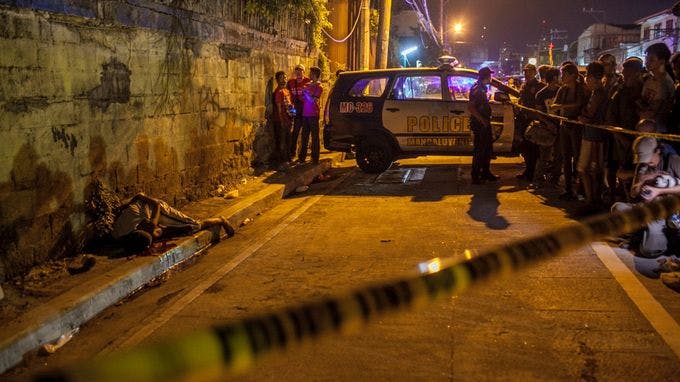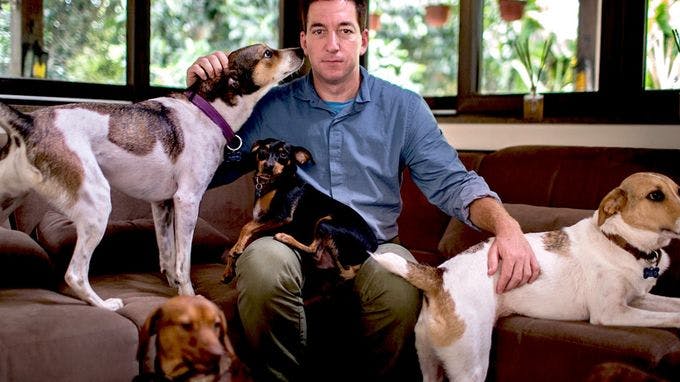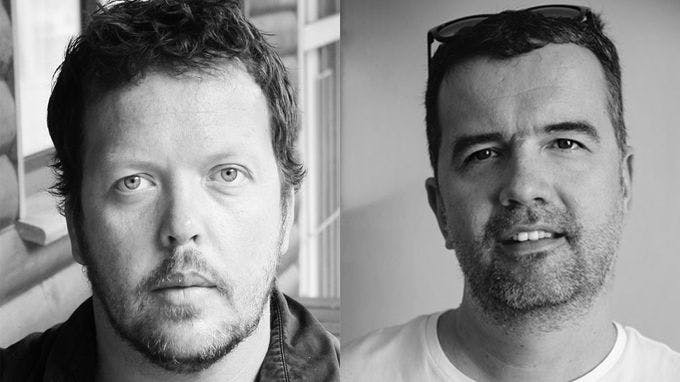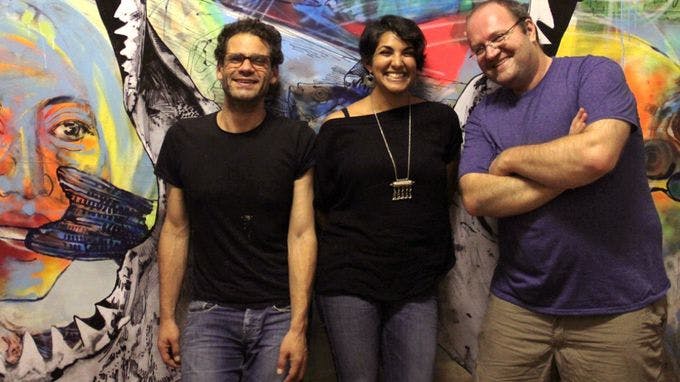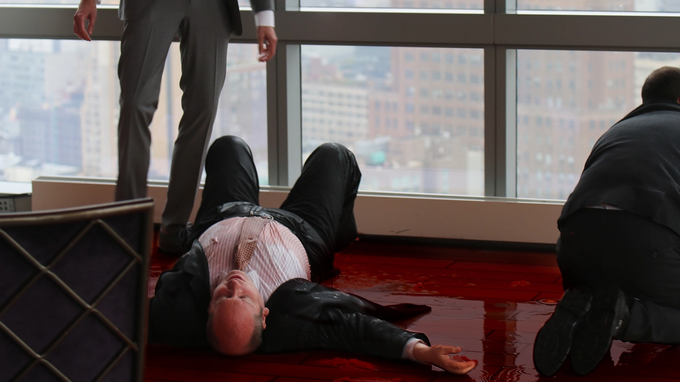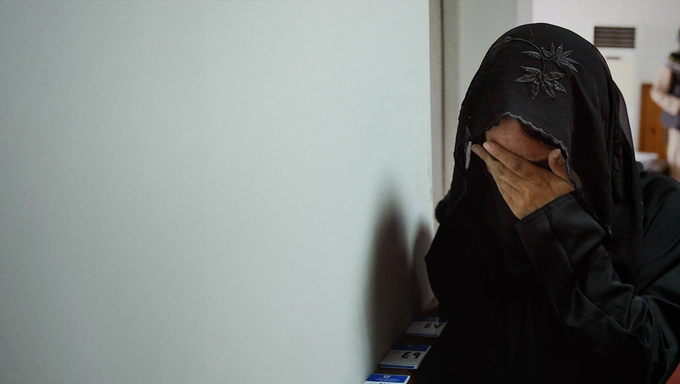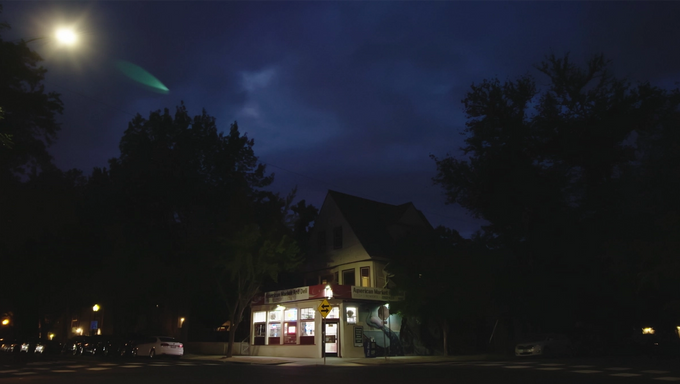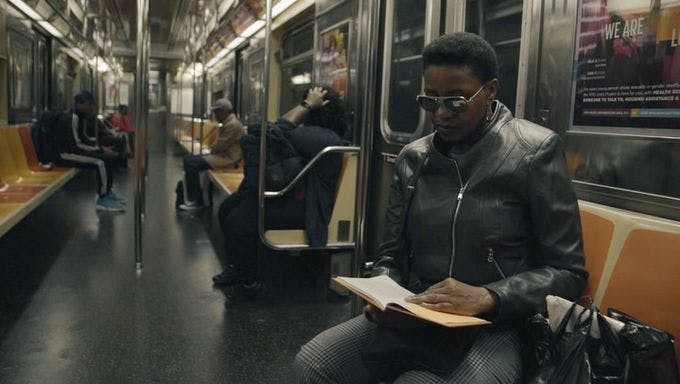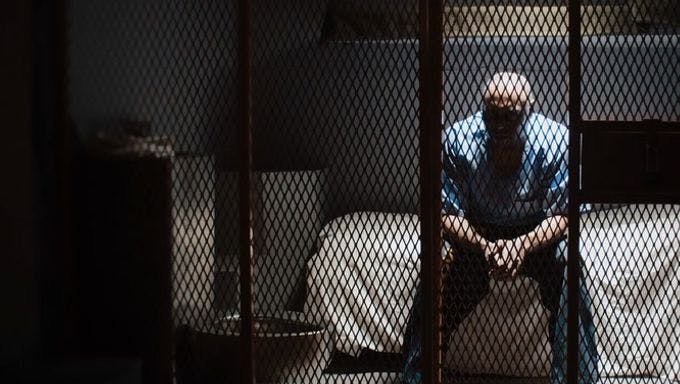When Myanmar held general elections on November 8, 2015, it was the country’s first openly contested election in 25 years. The last time open elections were held, in 1990, it resulted in a landslide victory by the National League for Democracy (NLD), a socialist and liberal democratic party led by future Nobel Peace Prize laureate Aung San Suu Kyi, yet the results were ignored by a military dictatorship unwilling to yield power.
In the days leading up to last year’s elections, two Canadian filmmakers were teaching a documentary workshop in Myanmar (formerly Burma). Mila Aung-Thwin, producer (Up the Yangtze) and co-founder of Montreal’s EyeSteelFilm, along with cinematographer Van Royko (Monsoon), worked with students, most of whom had little experience, on capturing the mood of the country as politicians and ordinary citizens prepared for the historic day. Moments after The Vote premiered at the New York Film Festival, Aung-Thwin and Royko sat near the reflecting pool of the Film Society of Lincoln Center to discuss how they wound up in Myanmar, their approach to collaborating with students on a collective film project, and the challenge of whittling down hours of disparate, differently purposed footage, into a potent ten-minute film.
How do you know each other, and how did you both wind up in Myanmar?
Mila Aung-Thwin: I’ve known Van since he was a film student at Concordia. He was taught by Dan Cross who started EyeSteelFilm with me. Van has been an interesting all-around cinematographer for quite a while. The Montreal filmmaking community is small enough that we’ve teamed up a lot over the years. So I’d been going to this film festival, the Human Rights film festival in Yangon, since its second year—it’s now in its fourth year. They invited me to put together a team to teach directing, cinematography and editing—sort of the overall producing of documentaries. It’s an 8-week course. And I’d go in and teach everything but directing.
Van Royko: Mila called me up and said he needed someone to teach cinematography. When we made this film, it was the second year we went to Myanmar.
Aung-Thwin: Van comes in and teaches cinematography and then I come back after they shoot for a couple of months and edit with them. It’s very intensive because you teach all day long for two weeks straight. It’s so intensive. I’d never really taught before, and Van had only taught a little bit. You’re using a translator and teaching people who, in most cases, never held cameras before. They’re in their mid-twenties. They’re very eager because there’s been no open filming in Myanmar for decades. They know visual language but documentary is brand new to them.
Royko: They’re more earnest and more serious than any student I’d seen in North America. It’s just so new. They don’t get the chance to make media, they don’t get the chance to hold cameras, so it’s just a novel experience, a very privileged experience. Many of them are chosen from the far reaches of Myanmar where there is no urban infrastructure. They come together to form a cool group.
Aung-Thwin: There’s a very high respect for teaching in general. After the uprisings and the first vote fell apart in the 90s, universities were shut down because they had fostered changed. Elementary schools and primary schools were left underfunded. Teachers weren’t paid enough. We got there and the students were so polite and attentive to everything you say. They’d bring up something you said on day one, like, “But I thought you couldn’t do jump cuts in cinema.” And you’re like, “You listened to that? That was sort of a ‘for instance.’” It was quite a privilege to teach people who wanted to learn.
Royko: But the fundamental mandate, the reason the program came into existence was because the people who started the Human Rights FF, these really seasoned filmmakers, realized the documentaries they were getting from Myanmar were not that good. The quality was really low. The question they wanted to address was: how do we have more homemade filmmaking. How do we tell our own stories? Which is basically the theme you hear all over the world right now. So they said we’re going to have to teach them ourselves. Through some connections and through Mila’s aunt who has been working there, they go a hold of Mila, which was great because Eyesteel has been a leader in integrated filmmaking and in bringing young people and marginalized people to the filmmaking process.
And so your second your session of teaching coincided with this huge national election?
Aung-Thwin: Right. They asked if we wanted to do the course again, which was scheduled for mid-November last year. And I asked, “Isn’t that when the big election that you haven’t had for years is happening?” They said yes, and that it would be really busy. No kidding. All of the students wanted to make films about the election but the teachers wanted to steer them to other things. We always push real-life filmmaking in our workshops and events. The first year we went to parking lots and shops and stuff, but this time it was election rallies. We did workshops in the midst of all of it, and it was fantastic.
Royko: When Mila originally asked me to do the workshop again, I was really busy—as was he. But when he said the elections were happening at that time, I was like, that’s pretty cool. I called him a couple of weeks before and asked him if we were going to make a film about it.
Aung-Thwin: Yet we still had to teach the hardest course in the world.
Royko: Eight hours a day. It’s insane. In this hot classroom, super humid. But we knew we wanted to tell a story about the election. We were going into it pretty quickly and you could have done it any number of ways. Every morning I would get up early, get on the train, and shoot the whole train ride. Sometimes I’d bring one of my students with me to do sound. And then we’d film in the classroom a bit. And then after the class was done, we’d go to rallies. It was two weeks of 16-hour days. We were trying to make the film but also give the kids a really good educational experience.
It’s one thing to be teaching eight hours a day, working with them on their own separate projects. It’s another thing to have them collaborate with you, to be working on a film that you’re making. That’s a different dynamic.
Aung-Thwin: We did treat it differently. We hired them after their hours and paid them. And they really dug that. For those roles we often used our year one students—especially ones we felt were being underutilized [in the industry]. We had this one girl Thu Thu who was so shy, but so talented and she wasn’t getting encouraged by the people who could give her money for her next film.
Royko: When we went back I asked about her. The film that she had shot was by far the strongest technically, and she was just so engaged. They told me she had gone back to her village. That she’s helping her dad rent apartments. I got them to call and say I had a job for her. And she was invaluable. She became kind of our second unit director. Since then it’s provided the boost she needed to just do film. In that context it might never happen again—it’s not something that seems possible without that push.
I’m glad you don’t inform the audience about the cooperation of the students until the very end, because there’s nothing “in training” about the film at all. Van, you’re such an experienced shooter, and the footage is clearly filmed at a very high level. Was there nervousness about being able to incorporate different textures of other filmmakers, at different levels of experience?
Aung-Thwin: We didn’t really have a plan…
That works too.
Aung-Thwin: Van did a fantastic job in choosing the locations and guiding the students to emulate his style to shoot scenes he wasn’t there for. At the end of it we were totally selfish: what was beautiful, what do we like. What works?
You also wound up using footage the students shot for their own projects?
Aung-Thwin: They were all doing their own films. But the storyline of the NLD, in The Vote, where you go into their headquarters—that came from our students from the year before who were already trying to make their own film on that candidate. So we helped out, piggybacked and brought students along. Another student was working on the disenfranchised students who couldn’t vote. So we sort of just looked at the mixture of our year one students and year two students as ways of us to get into already developing stories. A large part of the process was them just showing us everything, showing us the food, showing us the streets. I was showing them what I knew about shooting and they were bringing me into the city. That was a fundamental part of how we integrated them into the film. Those films they made were partially influenced by us but the whole thing was just an entire give and take process.
Royko: We had a lot of really great stories going on, but at the end of the day, we were making a ten-minute film, so that dictated a lot of what had to go. It was a difficult process.
But you weren’t always aiming for ten minutes. Can you talk about earlier versions of the film, and how it wound up at the length and shape it now has?
Aung-Thwin: The first version was quite long and was all about the students and their process. It was more in an interview style and then we’d cut to what was happening. You’d see the kids shooting. It was a different style of movie. I showed that version to the kids and they loved it, but in some ways it’s its own portrait of the school. And it was four times as long. One thing we realized is how little people knew of the political situation in Burma. We were immersed and felt saturated by the news, but you realize it’s only your friends in Burma who are talking about all of this. People who saw the film here didn’t even know there was a dictatorship! What I experienced was a film made in their context, but not in the context of the world. People were like, wow—there was a woman put under house arrest, and then she won the Nobel Prize, and then she won (the election)? So we had to get back to that.
Royko: As much as I liked that film, that more didactic film we’d made, I’ve always prized the mode that is more ephemeral, more experiential. Most of the cutting went on when I wasn’t around. When I first saw the cut, I felt like it didn’t make any sense. I was kind of depressed.
Aung-Thwin: You should hear Van talk about the films that he wants to make. They are so abstract. The notes we got from Field of Vision were pretty cool in helping us sculpt this version. They were like Kung-Fu masters who’d just say: “Try this.” And you’d try it and change something and it sort of developed into a different film.
Royko: It brought us to the film we wanted to make.
Aung-Thwin: People give so many notes on editing but they don’t have a frame of reference with all the footage. If you can just give a subtle note, without the solution, then you [the filmmaker] have to go back and examine your assumptions.
And only you can do that work.
Aung-Thwin: Just tell me what’s not working and give me a little hint.
Royko: It sounds so good in retrospect, but when you get that note, you’re like, “What the fuck?”
Aung-Thwin: Another nice element is that our editor Ryan Mullins did the workshops [in Myanmar] with us too. Then he spent months editing this ten-minute film. When Van suggested we shoot the election, I wrote to AJ that day and he said that sounds amazing—go for it. So we came back with all this footage a year ago. I thought there would be this quick turnaround, right after the election. And that did not happen.
Royko: I think it serves the piece better. It’s not really about the news. It’s not about the results. It’s a political mood piece, if there’s such a thing. It’s a portal. You get to go into a space in time during this monumental moment. It’s a privileged place to be.
